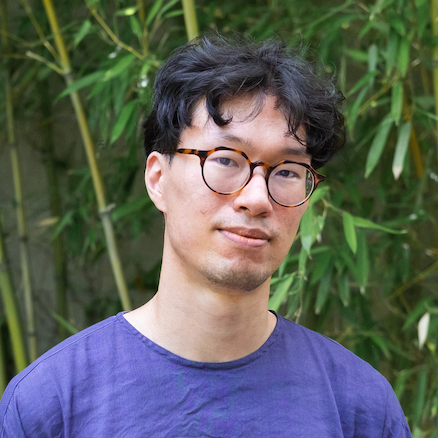Making Poetic Tools and Nurturing Soft Tech: Katherine Yang on Art, Code, and Information Design
This week, artist and programmer Katherine Yang visited INFO 4609 User-Centered Design to share about her work and career across information design and creative technology. Katherine is currently a frontend developer and designer at Fathom Information Design in Boston, where she focuses on building accessible and elegant data-driven interfaces.
Katherine describes her artistic practice as making poetic tools and nurturing soft tech. Her work operates at three intersections: language (bringing the poetics of writing into code), code (questioning cultural ideas about what makes “good” or “beautiful” code), and the web as her chosen medium for creating interactive experiences.
Poetics and Code
Katherine shared some projects from her personal creative work that highlight the ideas that interest her around code and language.
Prose Play began as a paper prototype with word options on slips that could slide behind a poem to transform it. The digital version lets users mouse over slots to see different word variants, creating an interactive living text.
Coem (“code plus poem”) started as Katherine’s senior thesis—a programming language that can only reflect input back through a “say” function, turning the act of programming into writing a poem by communing with the machine. She demonstrates with an adaptation of Ocean Vuong’s “On Earth, We’re Briefly Gorgeous.”
Storehouse-A, created with artist Steffi Che, is a dungeon crawler text adventure where you move as an @ symbol through ASCII art landscapes, discovering interactive poems in different rooms.
In the Year of a Tree documents one tree through photos taken over a year. In this project, Katherine treated alt text as a creative writing exercise—crafting descriptions of how each image fits into the overall story of the tree’s evolution to provide a meaningful alternative to the visual experience.
Professional Work at Fathom
Katherine then shared some professional work that she’s done with Fathom Information Design, a small Boston studio of about 10 people working at the intersection of design and development with data.
Scaled in Miles visualized the discography of Miles Davis as a timeline showing all recording sessions and collaborators. It was a passion project driven by a team member who is a “big music nerd.” When this project gained attention, they were approached to create something for Ron Carter, the most recorded jazz bassist in history. While the projects were similar, the team took intentionally different approaches to reflect differences in the artists’ careers. For instance, where Miles Davis is like a center around which music history revolves, Ron Carter is more like the bass itself—fundamental but in the background. The Ron Carter Universe project creates an exploratory immersive visualization where team members discovered unexpected connections between Ron’s work and their own personal interests.
Sentinel, their biggest ongoing project, began in 2019 as a hypothetical pandemic prevention toolkit in collaboration with the Broad Institute. When COVID hit, it became urgent and real. Over five years they’ve built dozens of tools helping scientists track virus mutations, spread patterns, and community health responses. The work continues, creating infrastructure for faster, better responses to future pandemics.
Rowboat is Katherine’s favorite project—Fathom’s first product for the general public. It’s a web tool where you can upload a dataset and instantly get useful visual information without needing Python courses or complex workflows. The design distills Fathom’s years of experience in that crucial first phase of data analysis: understanding what’s in the data before pursuing specific questions.
Accessibility as Community Care
Katherine’s final part of her talk is her “soapbox about accessibility.” She notes that 95% of the top million homepages had accessibility issues in 2025, partly because it’s rarely taught in design and computer science programs.
She emphasizes the curb-cut effect: designing for wheelchair users also helps people with strollers, roller skates, or heavy packages. Accessibility creates positive knock-off effects for everyone.
Katherine reframes accessibility as community care and creative exercise, highlighting work by disabled artist and activist Finnegan Shannon. Shannon’s Alt Text as Poetry project and related projects like Alt Text Selfies explore how alt text descriptions can be personal and intimate, not just a box-checking exercise. And as another example, Shannon’s museum installation titled Do You Want Us Here Or Not functions as both accessibility infrastructure and artistic statement.
Katherine closes noting that information design has huge accessibility problems that haven’t been addressed well, but highlights recent work on accessible data visualization that offers exciting approaches to the challenge.
